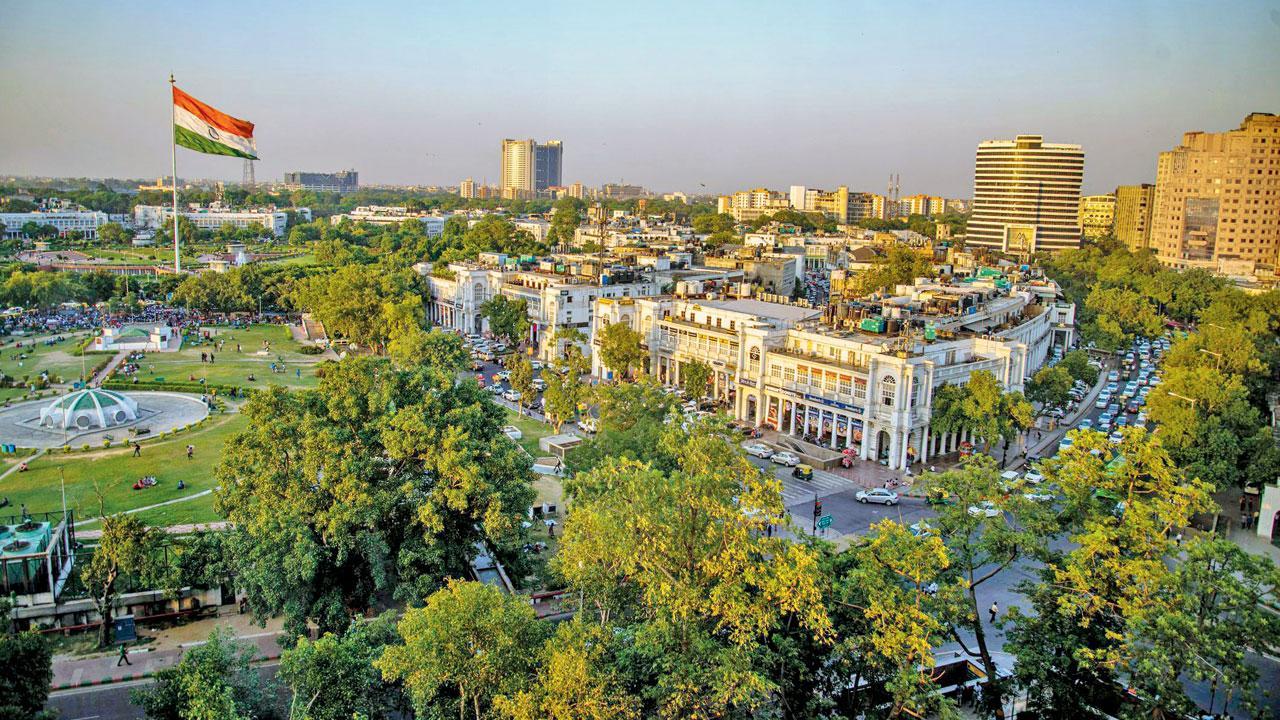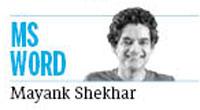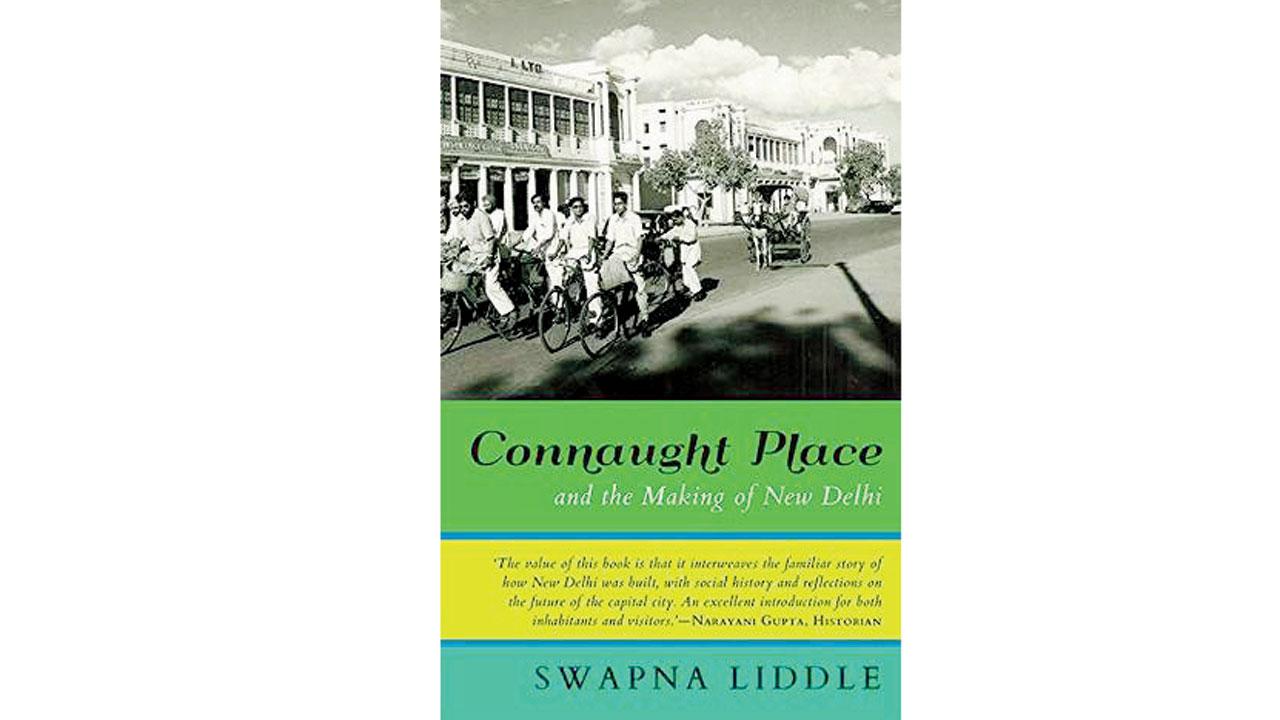Where will you find so much history, while non-stop restaurant/bar-hopping, in any Indian city?

A view of Connaught Place in New Delhi. Representation pic
 Once the Hotel Marina manager, Vishal, confirmed to me a historical fact, I asked him if we could check-in to rooms 104, 106, or 108? Not available. I wasn’t applying numerology to my overnight stay!
Once the Hotel Marina manager, Vishal, confirmed to me a historical fact, I asked him if we could check-in to rooms 104, 106, or 108? Not available. I wasn’t applying numerology to my overnight stay!
ADVERTISEMENT
These were rooms that Mahatma Gandhi’s assassin Nathuram Godse and associates had booked, with a Berretta pistol and bullets, to pump into the nation’s heart. Hotel Marina on New Delhi’s majestically radial, Connaught Place (CP), is now a Radisson Blu property.
Google tells me Birla House—on the subsequently renamed Tees January Marg, which is when and where Gandhi was shot dead—is 13 mins from Marina. Few loonies could well call for this hotel’s address to be christened after Godse. It is already in G Block—of Connaught Circus, which is the outer circle of CP.
Since 1995, its official name is Indira Chowk; inner-circle is Rajiv Chowk. Both after slain Indian Prime Ministers. Nobody calls Connaught Place/Circus anything but CP—named after Duke of Connaught (uncle of King George V), while he was alive.
Also Read: Vikramaditya Motwane: Can't hold a grudge against Saif Ali Khan, he speaks his mind | Exclusive
Shortly before Gandhi’s assassination, as with much of Delhi: “There was mob violence in CP. Corner-shops owned by Muslims were looted. PM Jawaharlal Nehru himself arrived and tried to beat back looters with a stick in his hand,” according to Swapna Liddle’s Connaught Place and the Making of New Delhi, which is more a book on the latter, than the former.

Swapna Liddle’s book Connaught Place
Of course, the two are the same thing. That is, CP—designed by R T Russell, the Public Works Department (PWD) boss; modelled on the Royal Crescent in Bath; that opened in 1933. And the making of New Delhi itself, as the swanky, leafy, imperial capital of British India, unveiled in 1931, designed by Edwin Lutyens, Herbert Baker and team.
Firstly, one doesn’t realise how tiny an official, planned real-estate the original New Delhi, with CP as its geographical centre was—when the capital got moved from Calcutta into then “a lifeless backwater of Punjab province.”
Of course, New Delhi is the eighth historically reimagined version of the same city. Shahjahanabad, now called Old Delhi, existed anyway.
New Delhi was obviously to be the gorgeous, global White Town. The way the Civil Line has existed as a British feature in other Indian towns—along with cantonment, and Mall Road, isn’t it? CP would be that Mall Road—only measuring up to New Delhi’s majesty—for high-end shopping and staid commercial centre.
Just that during WWII, large number of chilled-out American soldiers/officials showed up in New Delhi—looking for more casual entertainment. This demand, as per Liddle’s book, shook things up in CP. Nirula’s Corner House (of the famous fast-food chain) came up in 1942, with cabarets, flamenco and ballroom dancers, besides ‘continental cuisine’.
A US Army surgeon convinced one Pishori Lamba from Lahore to expand his Kwality’s ice-cream store in CP. That became a national brand. His Kwality restaurant still survives in CP. As do so many places that I’ve been seeing as a child—Zen, Embassy, Gola, United Coffee House…
So many new places noticeably added every time. Including Burger Singh that, like Burger King, is solving global hunger, with 39 bucks for a packed bun!
Unlike how the British envisioned it, CP is incredibly inclusive. The eatery biz, with every price point, really took off after independence. I know no other chill-central in India, of 2 km circumference, that you can restaurant/café/bar-hop to, non-stop, under the open sky, with both hands stretched wide.
Nope, Park St. (Calcutta). Church St. and thereabouts (Bangalore), Colaba Causeway (Bombay) don’t come close. Only five per cent of CP is built-up area. It went through an urban renewal programme, and feels more spruced up and spacious still.
CP should be every Indian metropolis’ entertainment aspiration. Of course, not all institutions survive. I see Volga, Gaylord (restaurants) are gone. So is Galgotia (bookstore), although there are many books in CP, including pavements. Regal (cinema) shut down; Rivoli, Plaza, Odeon remain.
Regal, estd. 1933, by writer Khushwant Singh’s wealthy-contractor father, Sir Sobha, was designed by W S George—the architect behind the equally elegant, St Stephen’s College, and Hotel Ambassador, next to Khan Market (‘Junior CP’, if you may).
The beauty of the real CP still is you could stroll a few minutes away and land up in even other/older worlds of, say, a congested Pahar Ganj! That’s where New Delhi railway station is. Godse got off the train here, and rented a retiring room first. This station was to come up in the self-explanatory Central Park (CP) of CP—an idea mercifully aborted at inception.
The humungous Central Park held a shady rep in the ’90s. It now houses the Rajiv Chowk metro station—next to the underground Palika Bazaar, ravaged by time; the shops strangely specialise in tattoos, and spy-cams!
Overground, in the evening, the park lights up with a series of video-cameras gathered and trained against a bunch of regular blokes, posing as news-anchors and panellists, throwing political propaganda at each other, at the top of their lungs. Similar to knob-heads on nightly, mainstream TV.
Potential fake news gets exclusively shot in this CP of CP, for YouTube and WhatsApp groups, nationwide. Where else could you simultaneously experience so much history, equally in the making, over a bar-crawl!
Mayank Shekhar attempts to make sense of mass culture. He tweets @mayankw14
Send your feedback to mailbag@mid-day.com
The views expressed in this column are the individual’s and don’t represent those of the paper.
 Subscribe today by clicking the link and stay updated with the latest news!" Click here!
Subscribe today by clicking the link and stay updated with the latest news!" Click here!







